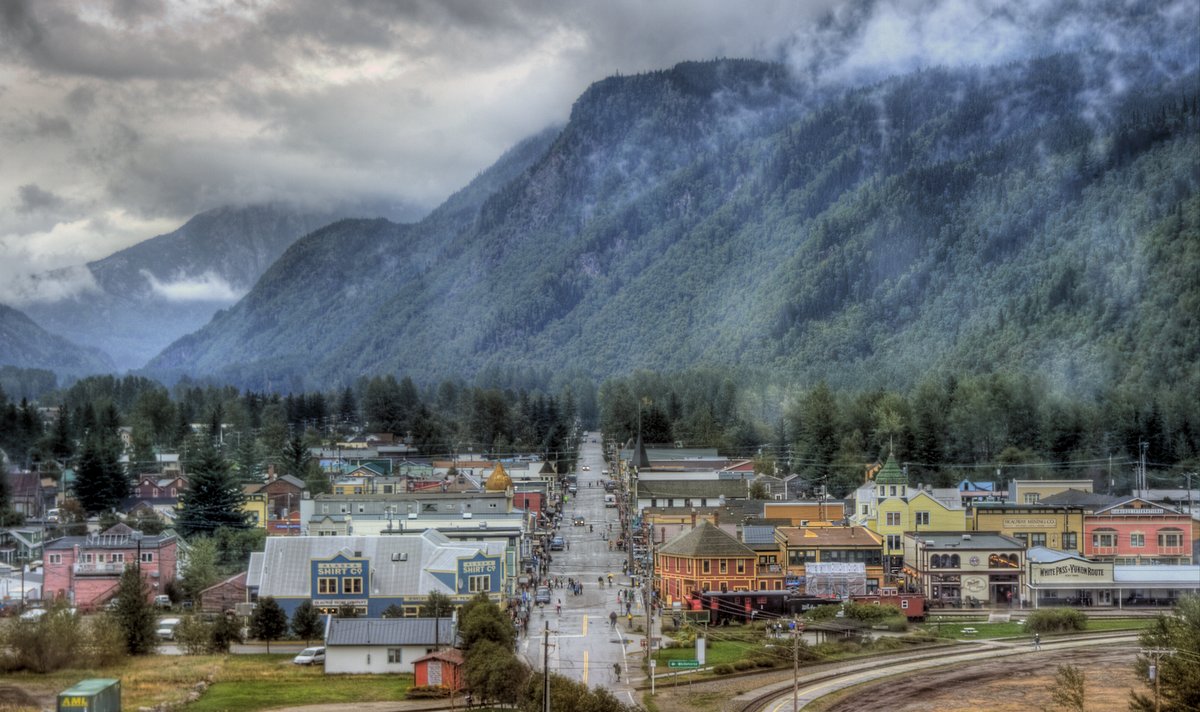Arctic Melt – Turning Resource Extraction Into Human Development

Skagway, Alaska. Photo: Jill Clardy
Globalization, urbanization, and demographic shifts present Arctic policy makers and residents with the opportunity to reinvent circumpolar development for the 21st Century. This Report offers an analysis of that opportunity in the context of Alaska ahead of the US Arctic Council Chairmanship. Globalization, urbanization, and population shifts provide a chance to redefine how we conceptualize, and realize, Arctic investment – a chance to turn economic growth into human development.
Executive Summary
The Arctic is changing at a rapid pace, and with it, the framework for northern development. No longer can leaders and inhabitants of the circumpolar north predominantly depend on natural resource production for economic growth. The effects of climate change and the volatile nature of commodity prices demand sustainable, flexible, and human-centered investments. The Arctic of today requires a development structure capable of promoting a diversified local economy, while simultaneously empowering communities to be climate resilient. While the European Arctic is effectively transitioning towards human development, Alaska’s socio-economic advancement is still heavily reliant on resource extraction. Residents, planners, financiers, and policymakers from all levels of government must work together to ensure Alaska’s well being for generations to come.
The Makings of a Crisis in the New Arctic of the Anthropocene
Human development is an approach for advancing human wellbeing that focuses on the richness of human life rather than just the wealth of the economy. It measures human progress in terms of opportunities – giving people more freedom to live lives they values – and choices – providing people with opportunities, not insisting they make use of them. The state of human development is the result of a complex set of interactions among economic, social, cultural, political, and environmental forces. Climate change and demographic trends are shifting the ground on which those socioeconomic interactions take place, and in turn are challenging the well being of individuals and communities in the Arctic.
- 87 percent of Alaska’s state budget comes from oil and mineral related activities. In the face of declining oil revenue, Moody’s Analytics have revised Alaska’s economic outlook from “stable” to “negative.” Even with the potential for a rise in global oil prices, cheaper unconventional oil production in the south and a pending climate change deal limit Alaska’s future reliance on petroleum revenue.
- Globalization and climate change have created unprecedented connectivity for the Arctic through communication systems, global markets, and environmental cooperation. The combination of rapid and stressful change brought about by economic internationalization, geopolitics, and global climate change challenge the wellbeing of residents, local communities, and many northern economic sectors.
- In 1920, only 6 percent of Alaska’s population resided in urban areas. Today, that number is 66 percent, with 49 percent of all Alaskan Natives living in the five most- populous boroughs. While this is still far below the level of urbanization for the entire country, which currently stands at 82.4 percent, Alaska is unique in that 55 percent of the state population resides in just two cities – Fairbanks and Anchorage.
- The population of Alaska is projected to increase by 28 percent to 915,211 by 2035, nearly double the national population growth rate in the same period. With lower infant mortality rates and better medical treatment for the elderly, the two biggest demographics poised to grow are the two most vulnerable – the youngest and oldest sectors of Alaskan society.
How Governments Can Develop Sustainable Investment Solutions
The US Chairmanship of the Arctic Council provides the American government an opportunity to reverse its neglect of the circumpolar region. Through investments in place, innovation, and community in Alaska, America can help to redefine northern development for the 21st Century.
Improve infrastructure selection and development schemes to invest in place over petroleum. Harnessing the political decentralization, economic connectivity, and international information sharing benefits of globalization can help transform Arctic settlements into livable communities independent of the extraction of a single resource. Smart growth, a type of community planning that encourages compact, walkable, and sustainable development, should guide the investment priorities of Alaska’s built environment.
Establish local business opportunities and entrepreneurship support systems that generate investment in local innovation over multinational industry. Creating a strong reputation for commitment to investment in research development, creativity, and design can provide incentives for entrepreneurship and the efficient use of existing and new knowledge. The agglomeration effects of urbanization can be capitalized on to facilitate the spillover of expertise across different sectors to build the fixed capital for a knowledge-based, localized economy instead of infrastructure that supports extractive industries.
Augment Alaska’s human capital and capacity by constructing schools that build inclusive communities for long-term resiliency. Revamping schools offers an opportunity to build a sense of community amongst Alaska’s various demographic groups and nurture the education and creativity needed for an innovative economy. Complete schools promote intergenerational social cohesion; foster healthier living environments with localized safety nets; and strengthen support system for the development of students. Investing in education design can secure Alaska’s current and future wellbeing during a period of intense economic, social, and demographic change.
Include stakeholders from all levels of government and different sectors in decision-making. Southern policymakers at the national level cannot be the only actors involved in reformulating Arctic investment. The past four decades have seen a continual increase in re-allocating economic and political decision-making to northern stakeholders. Admiral Papp, Secretary Kerry, and others in Washington must work together with a multi-level, multi-disciplinary team in order to make meaningful decisions on how to best support human development.